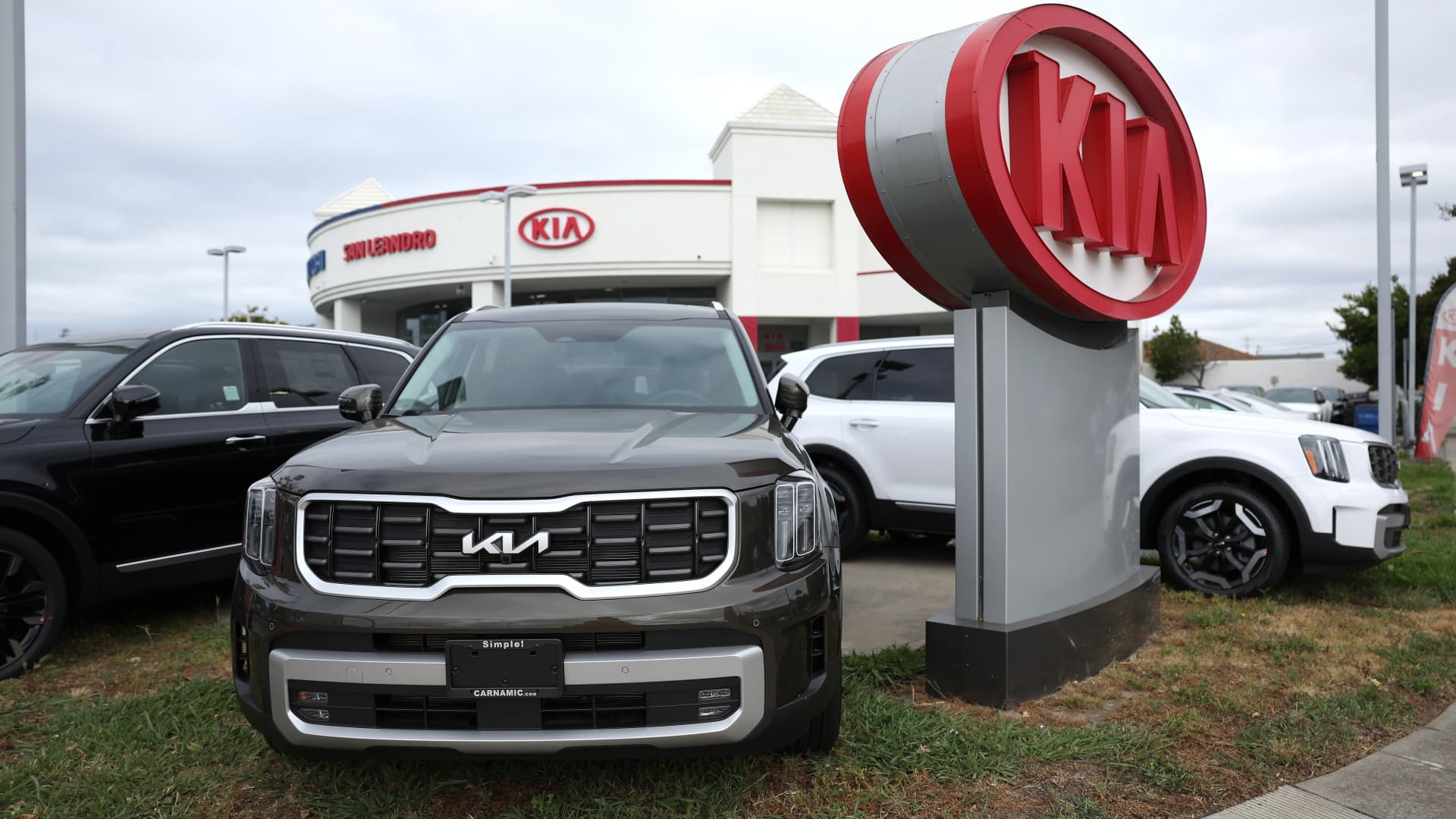New Kia cars are displayed on the sales lot at San Leandro Kia on May 30, 2023 in San Leandro, California.Justin Sullivan | Getty ImagesDETROIT – Sale
New Kia cars are displayed on the sales lot at San Leandro Kia on May 30, 2023 in San Leandro, California.
Justin Sullivan | Getty Images
DETROIT – Sales of new vehicles in the U.S. are expected to increase slightly next year, as the automotive industry continues to normalize from the coronavirus pandemic and other supply chain problems since 2020.
Forecasts from leading automotive data firms are calling for a year-over-year increase of between 1% and 4% to roughly 15.6 million to 16.1 million vehicles sold. Such sales would be the highest since 2019, when more than 17 million new cars and trucks were sold domestically.
Since that time, the auto industry has been battling production and supply chain problems sparked by the global Covid health crisis, with sales of less than 14 million vehicles – the lowest in more than a decade – in 2022.
Even a small increase in U.S. sales could be good for consumers and the economy. It would mean more vehicles are being produced, potentially easing recent affordability concerns amid inflation, high interest rates and record high new vehicle prices.
“While the year ahead holds the promise of further increased inventory and enticing deals that consumers have eagerly awaited, 2023’s high interest rates are expected to linger, provoking conflicting market dynamics.” said Jessica Caldwell, Edmunds’ head of insights.
Pricing power gives way to incentives
Edmunds believes new vehicle pricing power for automakers has peaked, as improved inventory has driven incentives back into the market.
For investors, increased sales are good, but lower prices and rising incentives are expected to be headwinds for many automakers and dealers that have produced record profits in recent years.
“Automakers specifically will weigh one other key consideration in 2024: Are they satisfied with this newly established supply-demand equilibrium, or are they willing and able to push sales volumes closer to prepandemic norms?” Caldwell said.
The expected U.S. growth compares with a 2.8% year-over-year increase in auto sales globally forecast by S&P Global Mobility.
“2024 is expected to be another year of cagey recovery, with the auto industry moving beyond clear supply-side risks, into a murkier macro-led demand environment,” said Colin Couchman, executive director of global light vehicle forecasting at S&P Global Mobility.
Any increase in U.S. sales next year would mark the first sequential sales growth for the automotive industry since 2015-16.
S&P’s U.S. sales forecast is among the highest. It expects sales to reach 15.9 million units in 2024, an estimated increase of roughly 2% from projected sales of 15.5 million units in 2023.
GlobalData, which acquired LMC Automotive, is forecasting a nearly 4% increase in U.S. new vehicle sales to 16.1 million units.
Edmunds expects 15.7 million new cars and trucks to be sold in 2024. That would be a roughly 1% uptick from an estimated 15.5 million cars and trucks sold in 2023.
At the low end, Cox Automotive expects 15.6 million vehicle sales, driven largely by an increase in fleet or commercial sales. Retail sales are expected to be “mostly flat,” according to Cox.
“Overall, we are expecting sales growth to be constrained and weak in 2024 – a bit more normal compared to the chaos of the past three years,” Cox Automotive’s chief economist, Jonathan Smoke, said in a blog post. “As an economist, headline-making swings in economic trends are always interesting to see and analyze, but such turbulence is rarely good news for business over the longer term.”
Don’t miss these stories from CNBC PRO:
www.cnbc.com

COMMENTS